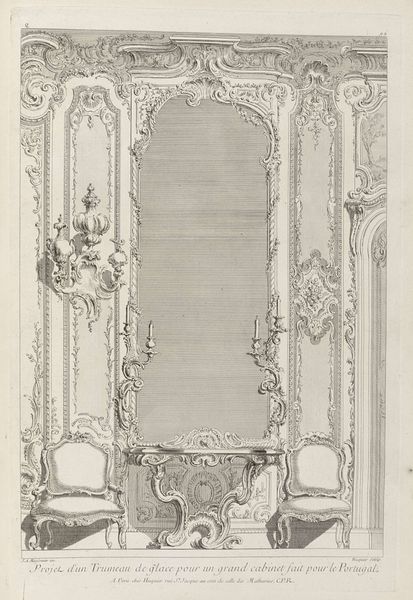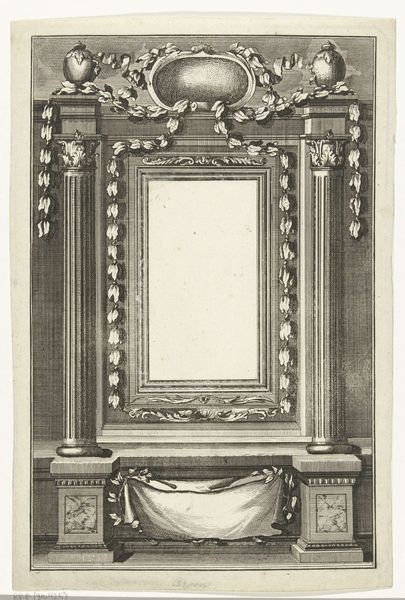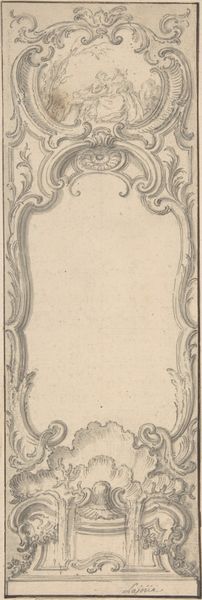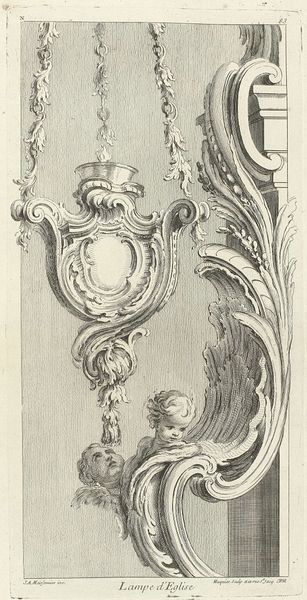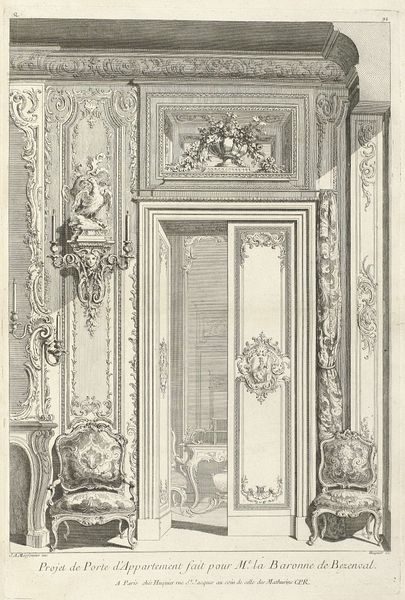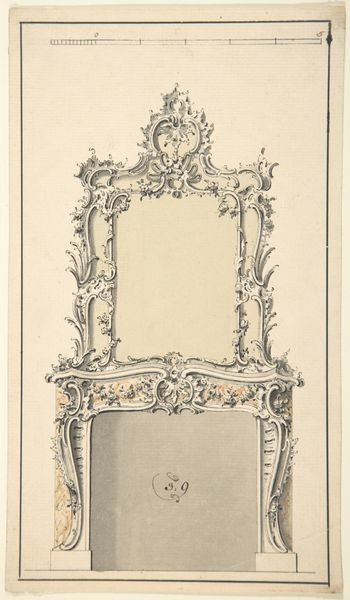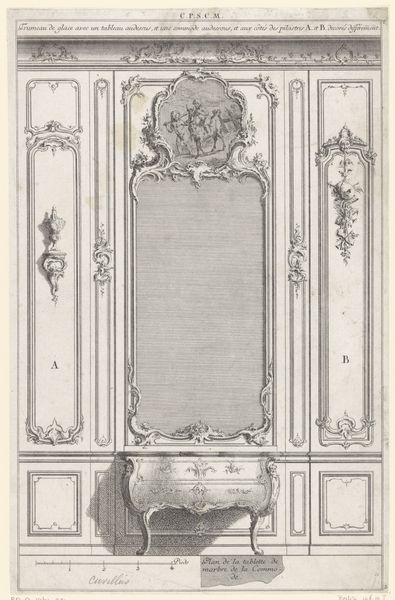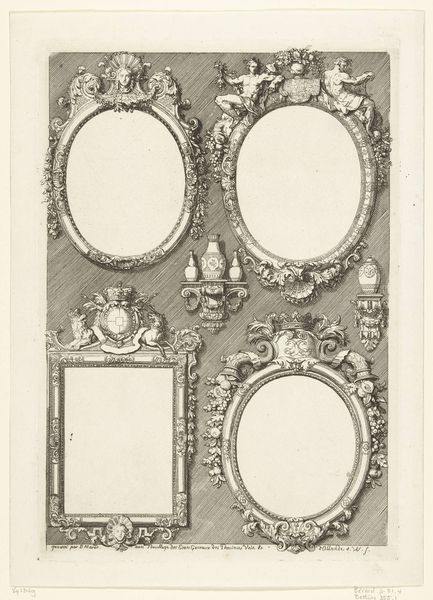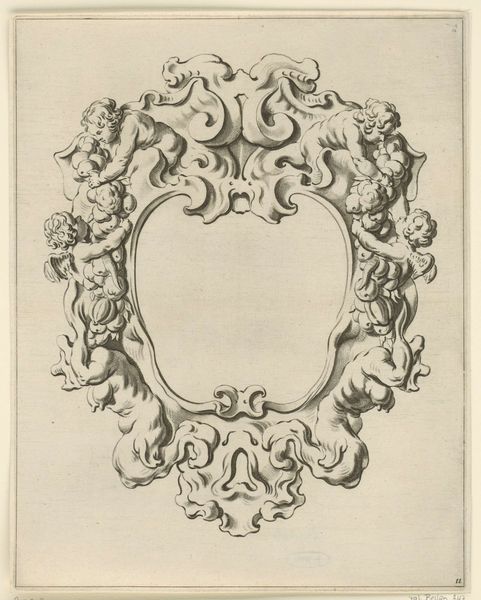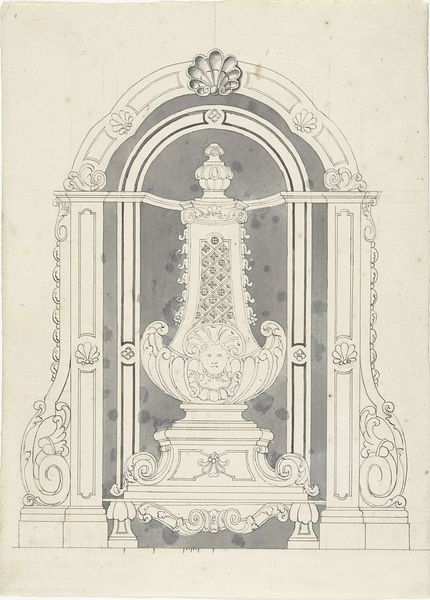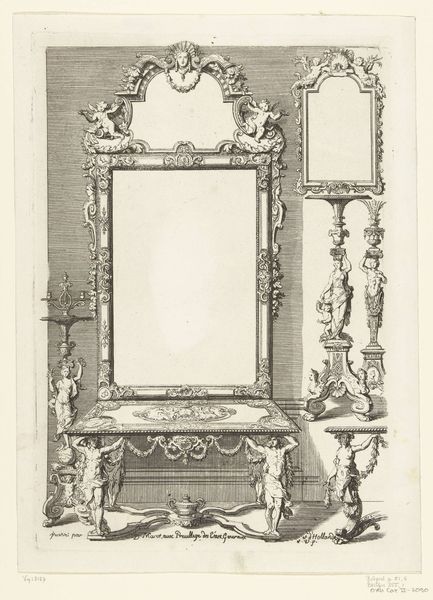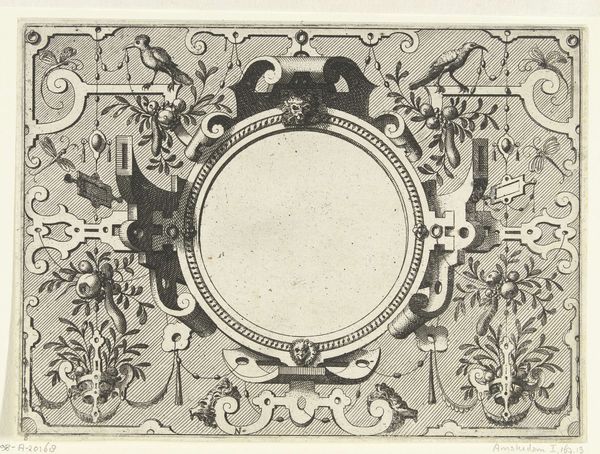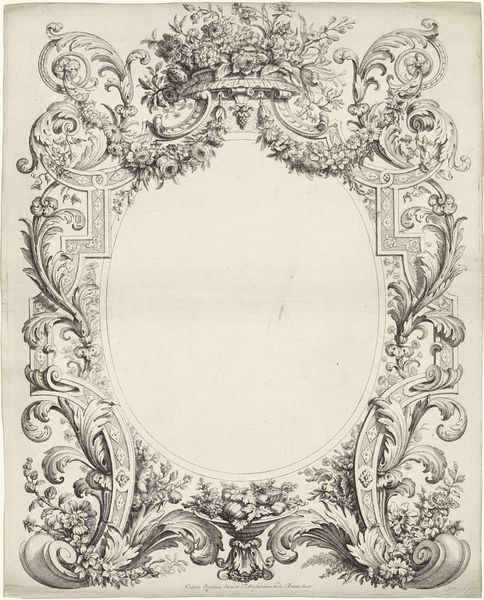
drawing, engraving, architecture
#
drawing
#
pen sketch
#
old engraving style
#
line
#
engraving
#
architecture
#
rococo
Dimensions: height 365 mm, width 261 mm
Copyright: Rijks Museum: Open Domain
Gabriel Huquier created this etching of a pier glass design sometime in the 18th century. The print depicts a mirror flanked by sconces, replete with rococo ornament. The function of a mirror is quite simple. It is a device that allows one to see oneself. This may seem unremarkable today, but in 18th-century France, such self-regard became a sign of status. Mirrors, like this one, were often incorporated into the interior architecture of elite homes. Rather than a mere object, the mirror became part of an aesthetic program. The asymmetry and naturalistic ornament reflect a period of increasing global trade and a fascination with exoticism and novelty. To understand the significance of such a design, historians rely on sources such as trade records, inventories, and pattern books. These resources situate the work within the economic and social realities of its time. The mirror, in this light, becomes more than a looking glass, it is an emblem of wealth and taste.
Comments
No comments
Be the first to comment and join the conversation on the ultimate creative platform.
